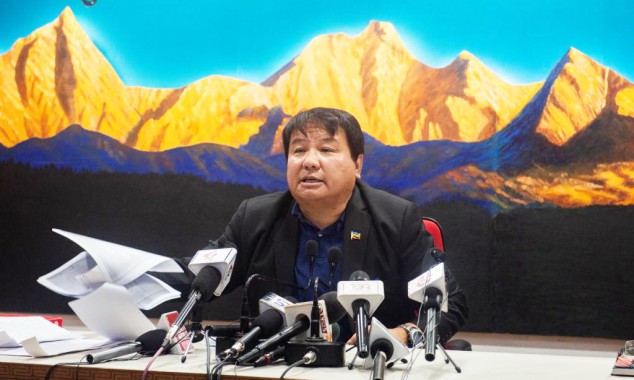




















Sunday, Jul 04, 2021 08:15 [IST]
Last Update: Sunday, Jul 04, 2021 02:42 [IST]
GANGTOK,: Opposition SDF party on Saturday asserted that Sikkim’s ownership over Darjeeling hills had ceased way back in 1835 adding that the Pawan Chamling-led front draws a ‘Lakshman Rekha’ on further alterations regarding the State’s territorial jurisdiction as defined in the 36th Constitutional Amendment 1975.
“To the people of Darjeeling, we say that Sikkim has been supporting your Gorkhaland cause. Sikkim has also suffered directly or indirectly for the demand of Darjeeling people. Keep on your struggles and efforts, value your sacrifices and one day, surely your Gorkhaland will be fulfilled.
Regarding Sikkim, we were a kingdom once. We lost our country and now we are a State. Beyond this, we will draw a Lakshman Rekha on our land. The SDF party and its president will remain committed on this,” said SDF chief spokesperson M.K. Subba in a press meet here.
Subba was giving the SDF’s position and recording the party’s strong condemnation on the Sikkim-Darjeeling merger demand being raised by Gorkha Rashtirya Congress (GRC).
The GRC had recently submitted a memorandum on this demand to the West Bengal Governor at Darjeeling contending that the Darjeeling hills belonged to Sikkim in past.
Subba dismissed such historical standing while pointing to the Deed of Darjeeling 1835 in which the Sikkim Maharaja had gifted Darjeeling hills to the East India Company.
“Through this press conference, the SDF wants to make it clear that Darjeeling got transferred from Sikkim in 1835 to East India Company. Sikkim lost Darjeeling from that moment and Sikkim does not have any ownership over Darjeeling since 1835 that is around 186 years ago. The East India Company gave away Darjeeling to British India and when the British left, Darjeeling came under the Indian government and then came under West Bengal when States were formed. At present, the people of Darjeeling are the owners of Darjeeling and there is no connection with Sikkim,” said the SDF chief spokesperson.
Subba added that the territorial jurisdiction of Sikkim which excludes Darjeeling region was further validated by the 36th Constitutional Amendment when the then monarchy was merged as the 22nd State of India in 1975. Those territories which existed before the commencement of the 36th Constitutional Amendment were declared as Sikkim by the Union government and Article 371F was inserted in the Indian Constitution, he said.
The SDF chief spokesperson added that Article 371F was made for only the territories of Sikkim and does not mention about Darjeeling and other regions.
Between the 1835 Deed of Grant of Darjeeling and 1975 merger of Sikkim, Subba pointed to the 1950 Indo-Sikkim treaty signed in view of Chinese expansionist policy along the Eastern Himalayan borders. “The 1950 treaty says that all previous treaties between Sikkim and British India that are presently in force as between Sikkim and India are hereby formally cancelled. This further ends the debate on Sikkim’s ownership over Darjeeling,” he said.
There are many more such historical records that give a clear position on Sikkim and Darjeeling and those documents must be respected, Subba said. He added that the ruling SKM has not been able to give a clear clarification based on documents on the merger row despite being in the government.
To a question, the SDF chief spokesperson dismissed as ‘unconstitutional’ the 1986 white paper issued by the Bengal government which states Darjeeling as a territory of Sikkim. That white paper is illegal and unconstitutional as only the Centre is empowered by the Constitution to redraw the physical territories of any State, he said.
